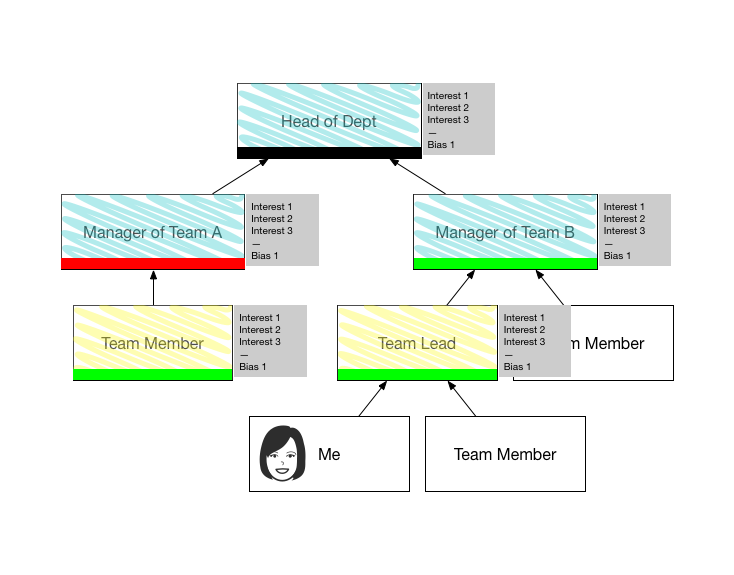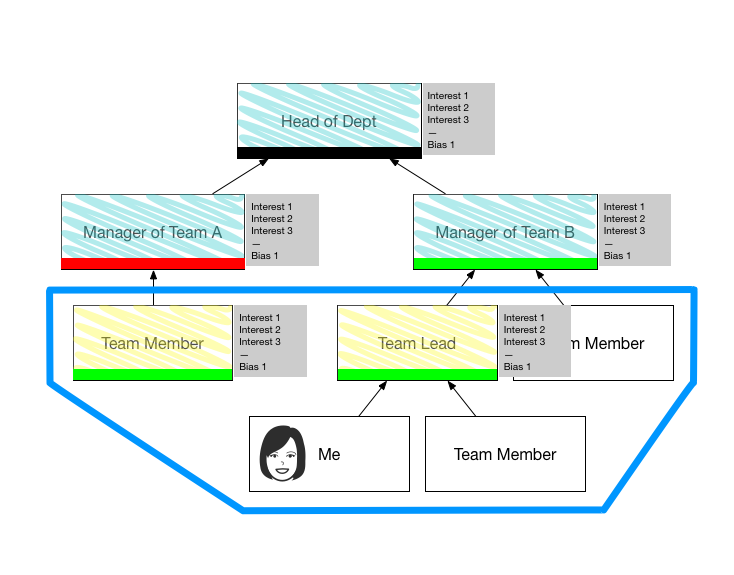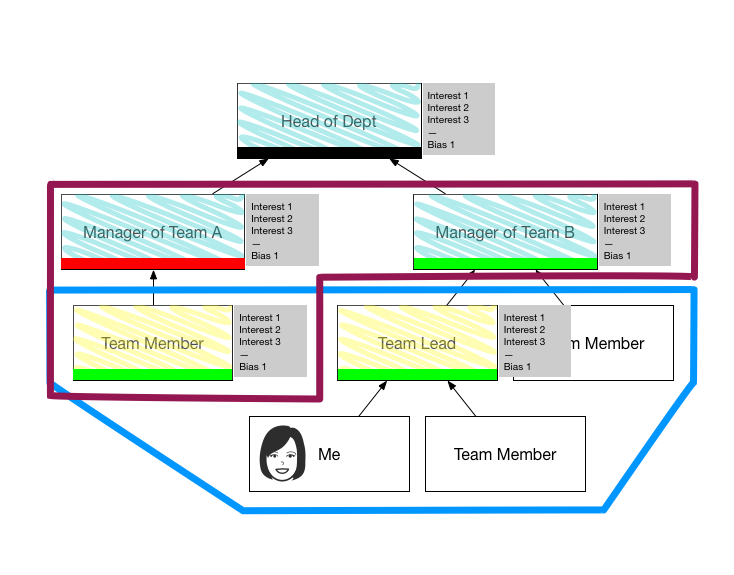Originally published: December 23, 2016
Relationship mapping is one of the most powerful techniques I learned in my career. It's the most effective method I've ever come across for making sure that the right people hear my message, and react to it favourably. In this post, learn exactly what it is, why it's a useful technique for managing your career goals or winning complex deals, and how to do it.
Relationship mapping is one of the most powerful techniques I learned in my career. It's the most effective method I've ever come across for making sure that the right people hear my message, and react to it favourably. In this post, learn exactly what it is, why it's a useful technique for managing your career goals or winning complex deals, and how to do it.
What's relationship mapping?
A relationship map is a heavily annotated organisation (org) chart that tells you about people of influence within a given domain.
If you have the following questions, relationship mapping is going to be useful to you:
- Who has a decision-making role in my project/goal?
- Who influences them?
- Who is pro/against my goal?
- Who is outside of my sphere of influence?
- What's the best way to tailor my message?
- How do I get my message to the right people?
Using this technique, you'll have a visual representation that will help you answer all of these questions. You'll be able to start taking actions that will make your messages significantly more effective, and start influencing the consensus thinking about your project or goal.
The first time you do this, it'll be messy. You'll want to move things around and change things, so I recommend grabbing an empty wall, a bunch of different coloured sticky notes, and your favourite pens to do this.
Be clear on your goal
There's a one to one link of a relationship map with a goal. Your map will be specific to something you're trying to achieve, and when you're done much of the map should be thrown away. That's because everything we ask ourselves while building the map will be specific to our goal, and will be used to tailor messages and drive our relationships with that goal in mind.
For that reason, you should be very clear on what you wish to achieve. Maybe it's a promotion, maybe you're on a multi-person deal team. Whatever it is, be clear and specific on the outcome you want before you begin.
Get an org chart
First, we need an org chart. This gives us a nice visual representation of everyone important to your goal.
If your goal is a promotion, then it'll be something like your department's org chart. If your goal is to sell something, it'll be an org chart of everyone on your prospect's deal/accounts team.
I'll use this as a working example throughout this post, with me at the bottom of a fictitious departmental org chart. My goal is to get a promotion.

Mark the decision-makers and influencers
Ask yourself who will make the final decision regarding your goal. Who will decide whether to sign the deal? Who will agree your promotion? When you know, highlight their names.
With that done, ask yourself who has great relationships with those decision-makers? Mark them in a different colour.
In the example below, the light blue people are the decision-makers and the yellow people are influencers.

Now we have a clear idea of who the most important people will be when it comes to achieving your goal.
Figure out who's a fan
The next question we will answer is, for each of our decison-makers and influencers, what do they think of our goal? If they're pro, we'll mark them green. If they're against it, we'll mark them red, if we don't know, we'll mark them black.
We don't mark people as neutral. Green is the goal, so if you think they're neutral/ambivalent, mark them as red/against. The more green on your map, the more likely you will be to be successful.
In the example below, you can see that most of the decision-makers and influencers like the idea of me being promoted. There's an important decision-maker who is against it, and one where I don't know what they think at all.

Now we know where to focus our efforts. We have the names of the people we will need to win over if we're to be successful.
Note interests and biases
Next up, note down everything you know about all of the decision-makers and influencers. In particular, think about professional interests and goals, whether they tend towards written or face to face comms, personal interests.

Now we are armed with the information we need to tailor our comms to be effective for each of the decision-makers and influencers.
Mark your sphere of direct influence
This step is easy. Draw a line around all the people you directly influence. By that, I mean the people who come to you for counsel and who are likely to act on your recommendations.
If they're inside that circle, and they're green, they're your super fans. If they're inside the circle and red, you need to focus on building a stronger relationship. If they're outside that circle and red, then we have work to do (in the next step).

Now we know the relationships that you can improve on your own.
Mark other spheres of influence
Uh oh. There's a decision-maker who's against your goal, or you don't know well enough? We can fix that.
For these people, find someone who influences them. For that influencer, draw their sphere of influence on the map.

Now we know the people who can help us build a better reputation and back us up.
How do I use it?
The relationship map is a tool for getting things done. It gives you insight into where to focus your efforts, and the goal is to make as much in it green as you can.
Based on the plan for your goal (say, promotion within a year), use the map to build a comms plan:
- What kinds of things do these key people need to know?
- What format do those things get communicated?
- How frequently should those communications happen?
- Who will deliver the message? Will it be you, or another influencer?
- Which relationships do you need to fix or improve? How?
Review the map regularly. Don't let it get stale. Update anything that has changed since your last review (eg. new team members, changing levels of approval etc).
Hey presto. You now have your first relationship map, and probably a bunch of things to think about as well ;)